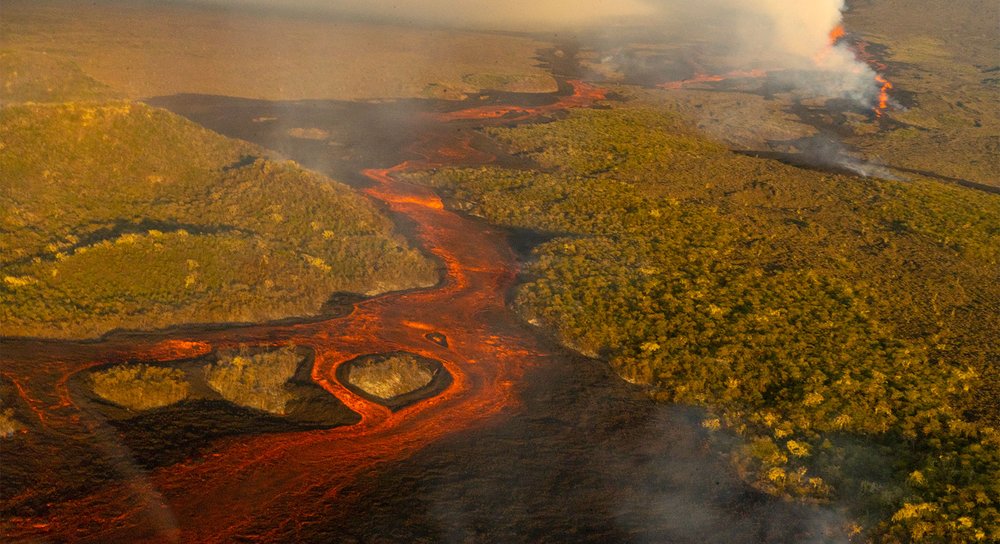Author: Isabel Grijalva
Wolf volcano began erupting in the early morning hours of January 7, starting at 00h20 EST (January 6, 23h20 local time). The volcano is located in the north of Isabela Island, approximately 100 km from human populations. Its ecosystem it is home to the pink iguana, a species endemic not only to Galapagos, but also to Wolf Volcano.

The Galapagos National Park Directorate announced that the smoke and ash plumes reached between 1900 and 3800 meters (6200 and 12400 feet). At the moment, populated areas are not at risk.
Prof. Dr. Dennis Geist, member of the General Assembly of the Charles Darwin Foundation, former professor of volcanology at the University of Idaho and currently a Program Director for the U.S. National Science Foundation, says: "There are eruptions every few years at Wolf. The whole volcano is built of lavas like this, since the origin of the pink iguanas. So, it's a natural process and the eruptions are really part of the iguana's natural ecosystem." Dennis has conducted fieldwork in Galapagos since 1982 to understand the origins of magmas, eruptive processes and geological controls on biodiversity.
“This eruption is near the location of the two previous eruptions, so the ground is barren. The eruption will burn some vegetation, but then the lava will become covered in vegetation on its own after a few decades." Dennis adds.

The volcano has a height of 1710 m asl (5620 ft), and is the highest of the islands' volcanoes. The volcano's previous activity occurred in 2015. Two years later, in 2017, the Charles Darwin Foundation assisted in the preparation of a mission to study the lava flows. The mission involved the Geophysical Institute of the National Polytechnic School with scientists from Cambridge University and a ranger from the Galapagos National Park. More information here https://www.igepn.edu.ec/islas-galapagos/tag/Wolf.
What do we know about the Pink Iguana?
According to the International Union for Conservation of Nature, the pink iguana is critically endangered. Among the main problems that threaten the existence of this species is its extremely restricted distribution on an active volcano, a population dominated by adults and no recorded juveniles, the presence of introduced predators such as cats and rats, among others (Galapagos Atlas, 2018).
"It is very likely that the iguanas have been interacting with the eruptions throughout their existence. Pink iguanas even seem to like the scoria and ash from the 1981 eruption as nesting habitat." Dennis points out.
Last August, following an expedition the Galapagos National Park counted 211 individuals of pink land iguanas.




